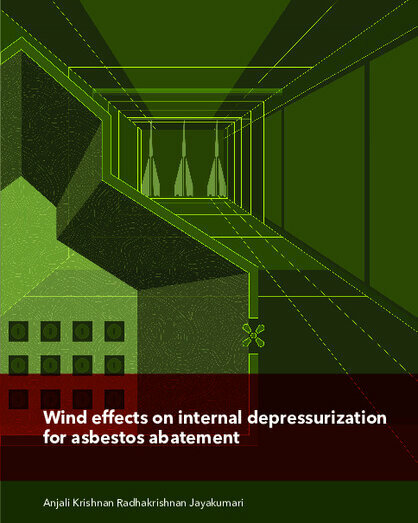Wind’s impact on asbestos depressurization
Anjali Radhakrishnan Jayakumari defended her PhD thesis at the Department of Built Environment on May 15th.
![[Translate to English:] [Translate to English:]](https://assets.w3.tue.nl/w/fileadmin/_processed_/0/1/csm_Radhakrishnan%20banner%20image_82dc703b64.jpg)
Asbestos abatement is a process fraught with risks, as it can release harmful fibers into the air, posing a significant threat to public health and workers' safety. Governments worldwide have set guidelines for this process, one of which is to maintain the pressure inside the asbestos-containing zones lower than the outdoor environment. However, these guidelines overlook a crucial factor - the impact of wind on the pressure difference between the indoor and outdoor environment. For her PhD research, Anjali Radhakrishnan Jayakumari delved into this unexplored territory, investigating the effects of wind on internal depressurization during asbestos abatement.
Research indicates that wind can create high suction pressure on building facades and roofs, potentially leading to the release of asbestos fibers through leakages in the envelope of the asbestos-containing zone. Therefore, understanding the impact of wind on asbestos abatement is crucial. Anjali Radhakrishnan Jayakumari’s PhD thesis sought to investigate how atmospheric winds affect the depressurization established using a mechanical ventilation system during asbestos removal.
Wind-tunnel tests
Radhakrishnan Jayakumari employed wind-tunnel tests and numerical simulations to study a building with asbestos containment and a mechanical ventilation system. The goal was to investigate the adequacy of the standard depressurization set by government authorities and implemented by industries.
Wind-tunnel tests were conducted on a scaled building and ventilation system. By measuring internal and external pressures at various wind speeds and directions, Radhakrishnan Jayakumari found that atmospheric winds significantly affect depressurization.

Network model validation
The analyzed depressurization value of -20 Pa, typically used by industries, becomes inadequate, leading to a breach in containment even at lower wind speeds for the building considered. The higher the wind speed, the higher the possibility of a containment breach. The breach probability also depends on wind direction relative to the building’s geometry.
Radhakrishnan Jayakumari 's study validates a ventilation network model named SYLVIA, which can accurately predict internal pressure and containment breach probability. Additionally, the study uses computational fluid dynamics (CFD) simulations to provide input for SYLVIA.
Results show good agreement between CFD and wind-tunnel data, suggesting that CFD simulations can reliably predict external wind pressures for use as input in SYLVIA.
Overall, Radhakrishnan Jayakumari 's research underscores the importance of considering wind effects in asbestos removal processes. By understanding how wind influences depressurization, we can better protect public health and workers' safety during asbestos abatement.
Title of PhD thesis: Wind effects on internal depressurization for asbestos abatement. Supervisors: Twan van Hooff, Stefanie Gillmeier, Romain Guichard.